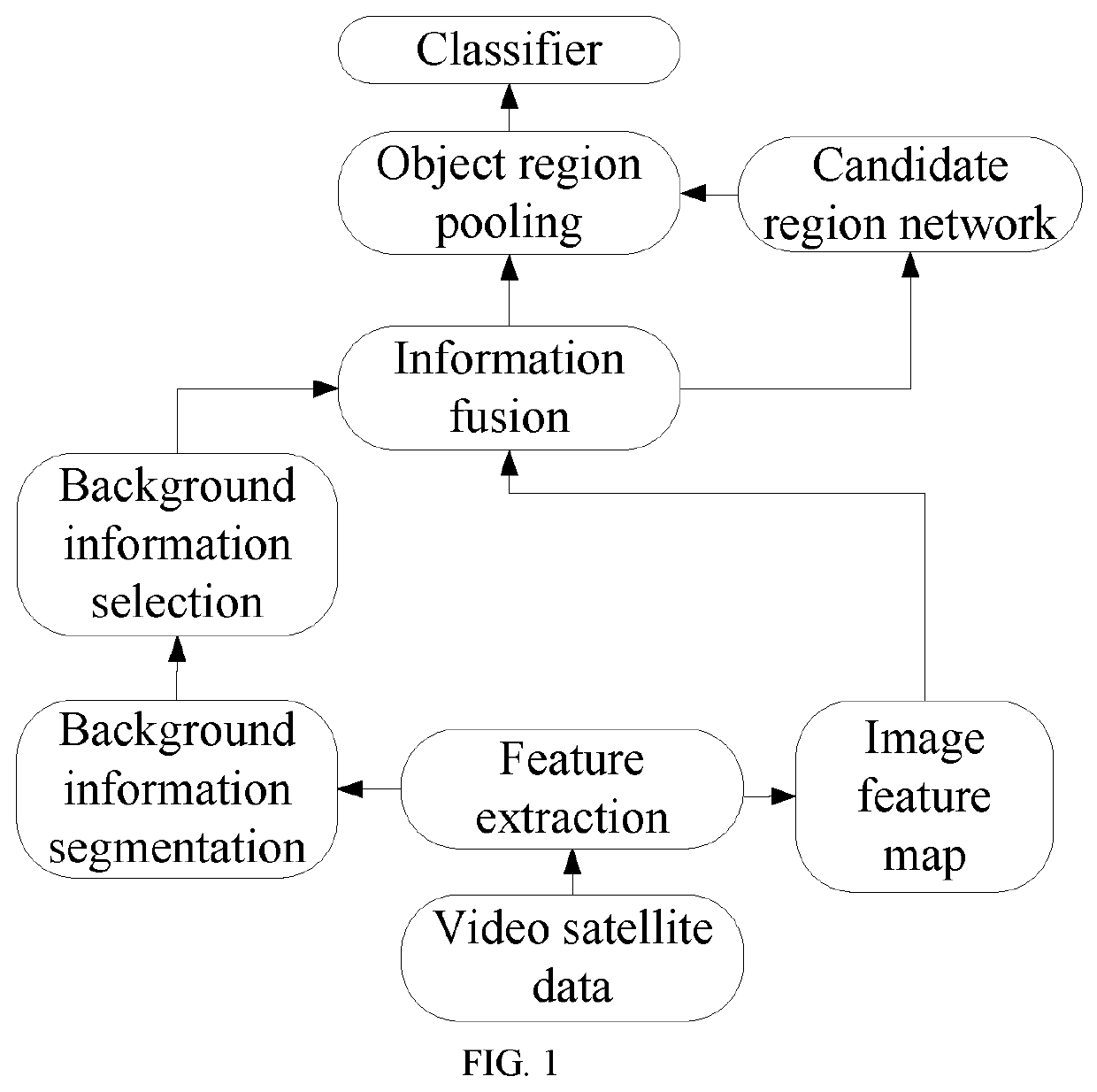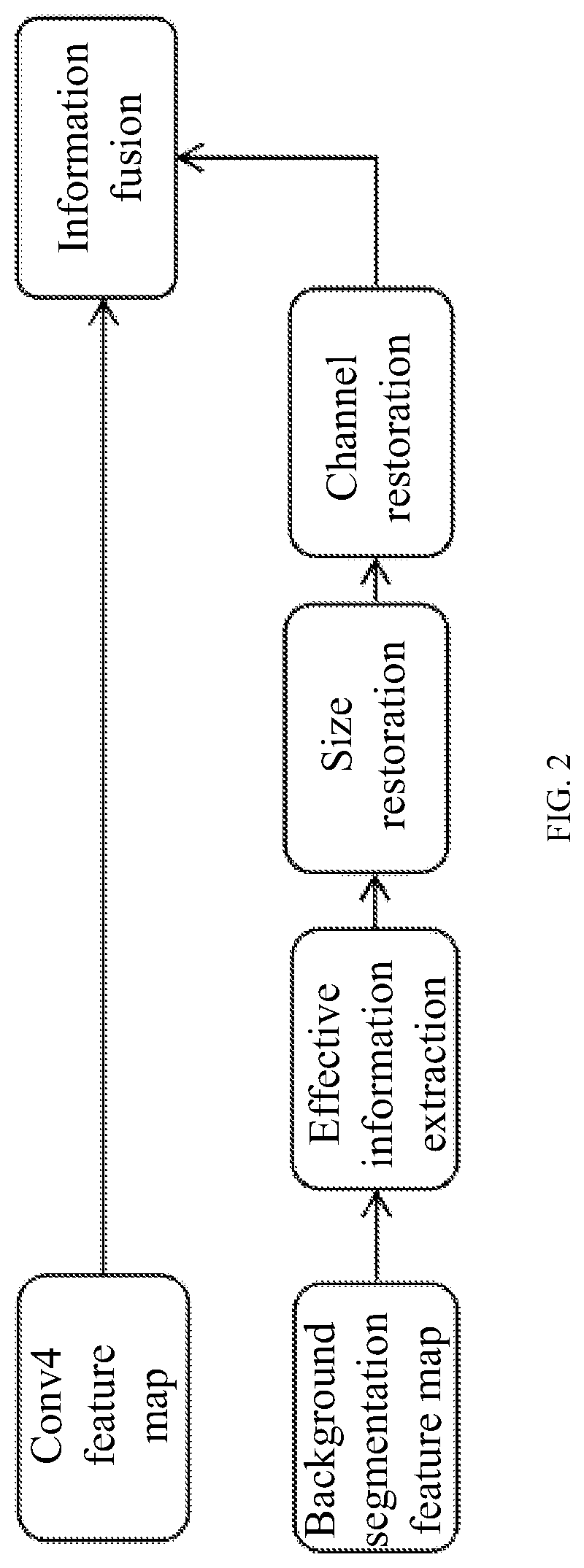Method for dim and small object detection based on discriminant feature of video satellite data
a satellite data and dim detection technology, applied in scene recognition, instruments, computing, etc., can solve the problems of poor generalization ability, limited application scenarios, unsatisfactory detection speed, etc., to improve the detection accuracy of dim, enhance background, and increase the contrast between object and background.
- Summary
- Abstract
- Description
- Claims
- Application Information
AI Technical Summary
Benefits of technology
Problems solved by technology
Method used
Image
Examples
embodiment
[0057]This embodiment provides a method for detecting a dim and small object based on a discriminant feature of video satellite data. As shown in FIG. 1, the method includes the following steps:
[0058]S1: cutting an image obtained from a video satellite into image blocks with the same size and inputting the image blocks into a VGG16 backbone network to obtain an image feature of the video satellite data;
[0059]S2: performing data annotation on the cut image blocks, taking an annotation region obtained by the data annotation as a range for extracting a discriminant feature, and extracting the discriminant feature of an object by adopting a symmetric semantic segmentation model and an autoencoder network model;
[0060]S3: fusing the image feature of the video satellite data and the extracted discriminant feature of the object by utilizing a top-down adjustment mechanism;
[0061]S4: by utilizing an attention mechanism, performing background enhancement on a background of a segmented image ob...
PUM
 Login to View More
Login to View More Abstract
Description
Claims
Application Information
 Login to View More
Login to View More - R&D
- Intellectual Property
- Life Sciences
- Materials
- Tech Scout
- Unparalleled Data Quality
- Higher Quality Content
- 60% Fewer Hallucinations
Browse by: Latest US Patents, China's latest patents, Technical Efficacy Thesaurus, Application Domain, Technology Topic, Popular Technical Reports.
© 2025 PatSnap. All rights reserved.Legal|Privacy policy|Modern Slavery Act Transparency Statement|Sitemap|About US| Contact US: help@patsnap.com



